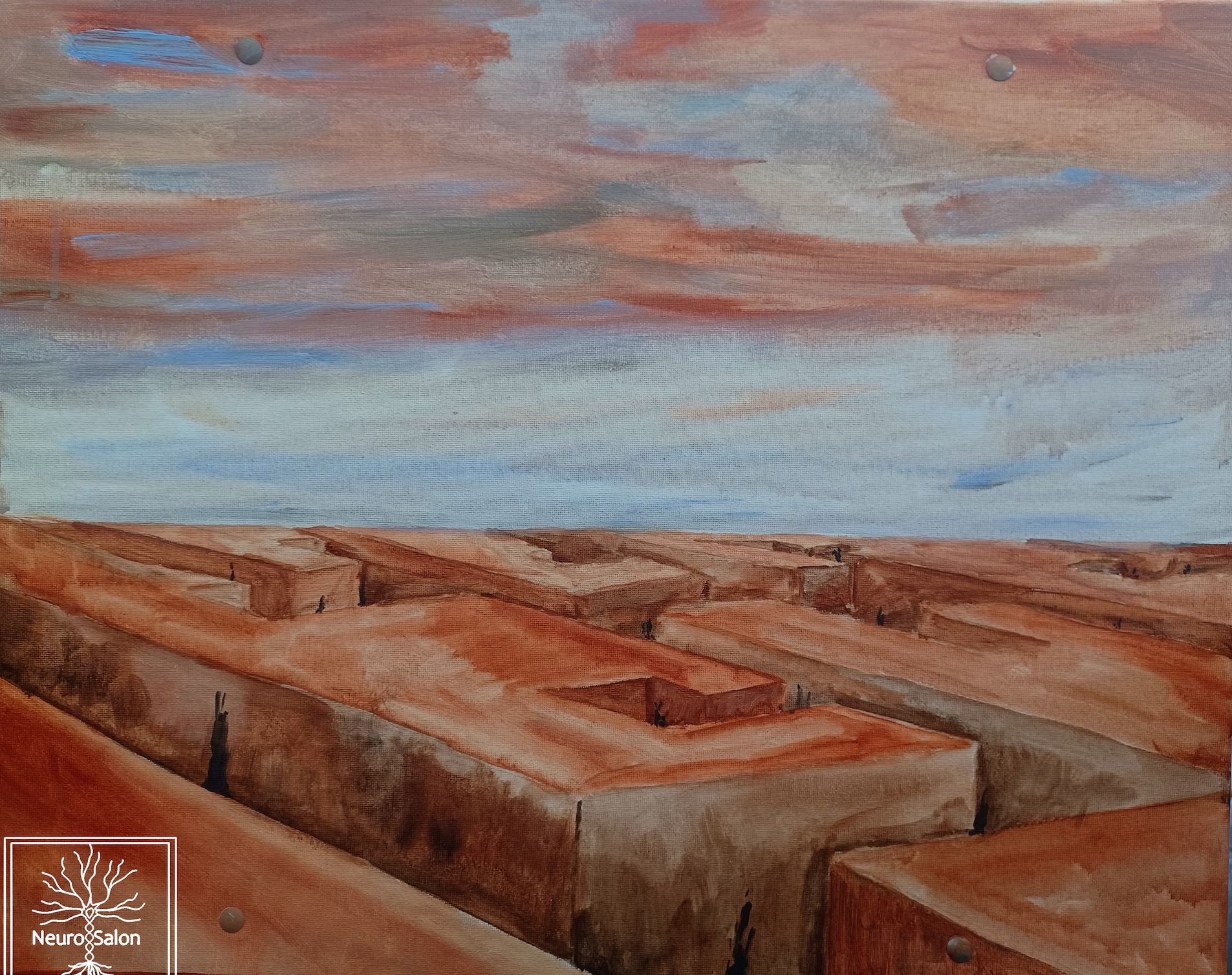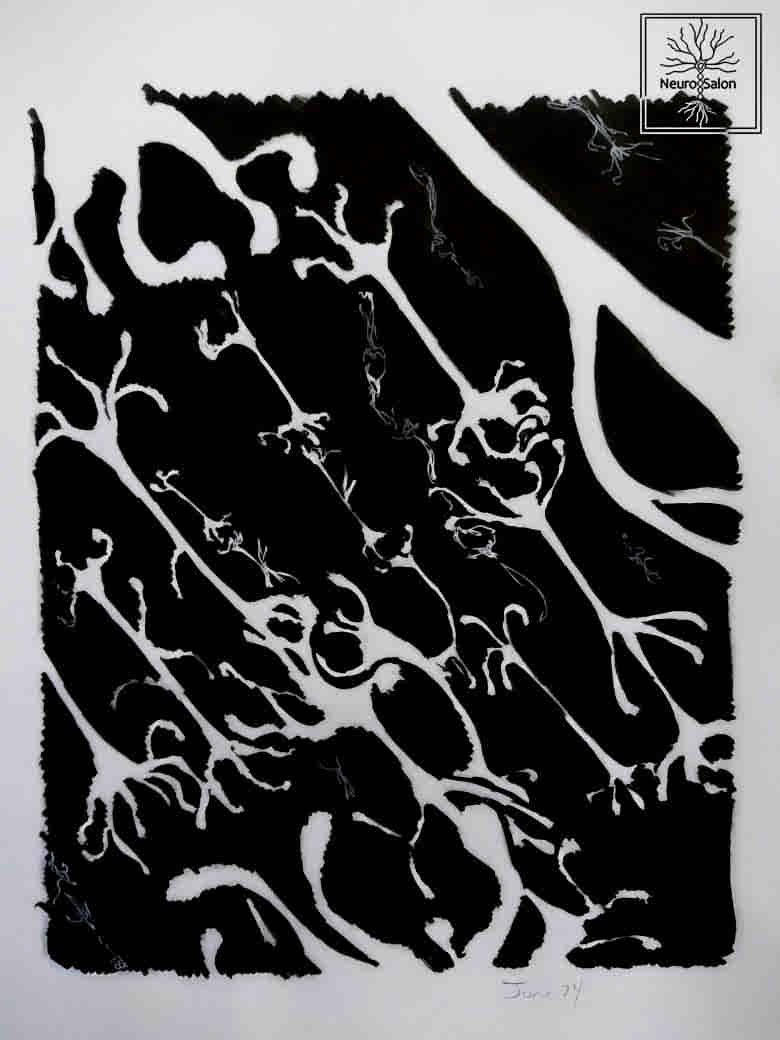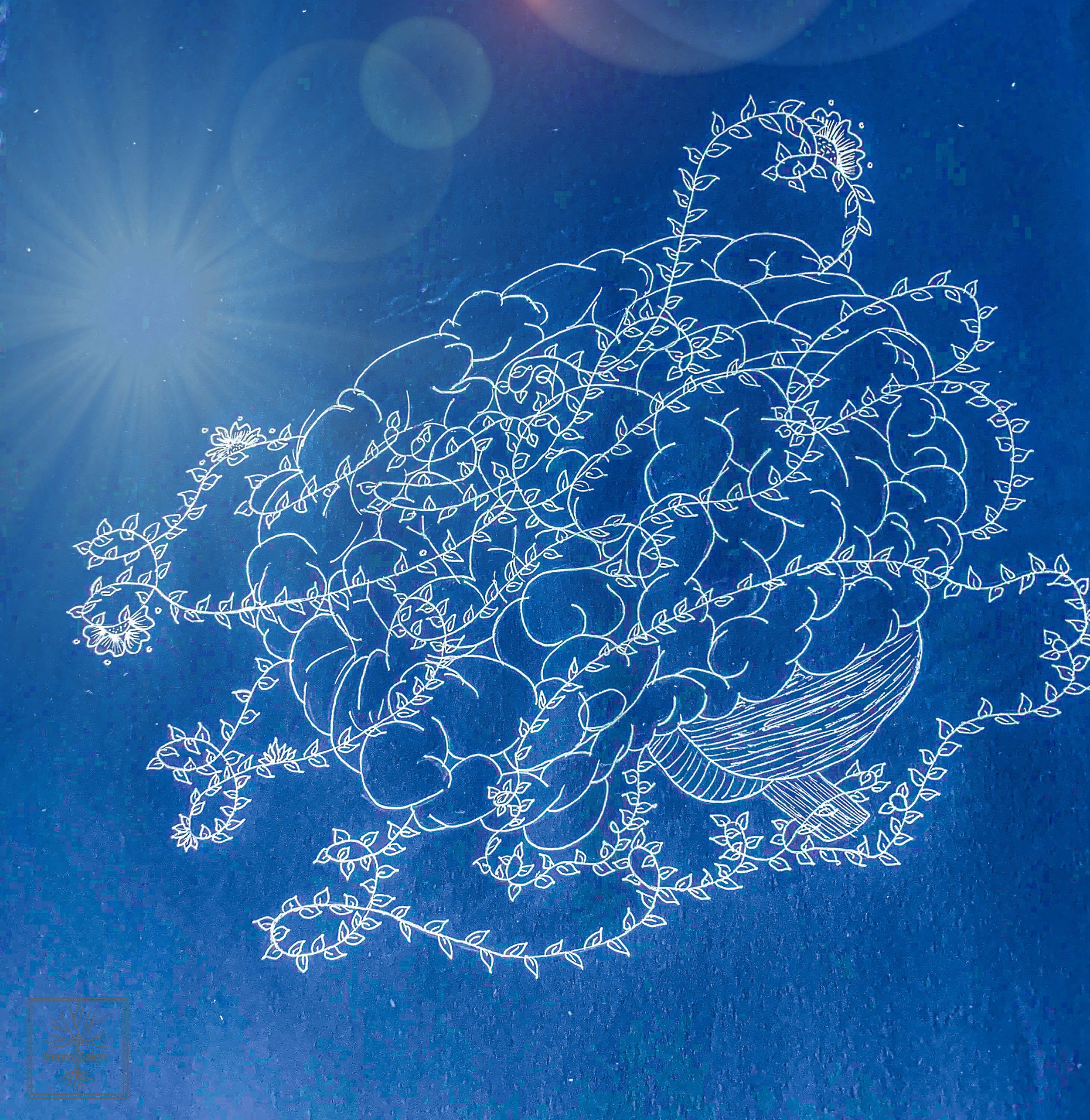Zena Meighan - The Conversation
Ink on Paper
Positive stimulation of the brain is key to increased neuroplasticity and brain health. Though Neurosalon focuses in the visual and performing arts, we heavily encourage those who don’t have experience or aren’t interested in the arts to engage in any activity that they enjoy as another method of achieving the same benefits—it could be as mundane as a good conversation with a friend.
Kunj Shah - Removing Lynx
Digital
By removing the lynx-1 gene, we could allow our brains to return to a more malleable state; which would lend itself to an enhanced ability to learn and overcome trauma.
Anna Peris - The Beauty of Neurons
When we’re young, our brains pick up new skills and information rapidly; you might have heard that it’s far easier to pick up a language as a child than as an adult. At this stage, our brains have a lot of plasticity.
Anna Murphy - Monocular Deprivation
When we are young, our neuroplasticity is very permeable. So much so that we are able to rewire the brain in ways to fix abnormalities like lazy eyes naturally. By omitting stimulation to the healthy eye, the weak eye is forced to be the only source of vision, causing it to heal itself on its own.
Anna Murphy
Oil on canvas
Battle of the brain regions:
Anxiety is a common feeling among all people, how one reacts to stress can drastically change their quality of life. Learning how to deal with stress in healthy ways in creative outlets can lead to better mental health.
Zena Meighan - Neural Grooves
Acrylic on Canvas
The grooves in our brain form as we learn new things, and deepen with repeated use. It is difficult to change the neural grooves in our brains as we age, and as such we can become “stuck” in certain patterns of thinking or behaving.
Jiu Han - Plastic vs Rigid Brains (Child vs Adult)
Oil on Canvas
Oftentimes we feel that our persons are brighter, jollier, or more colorful when we’re children versus when we’re adults.
Julie Miwa - DNA of You
Digital
Zena Meighan - The Beauty of Neurons
Ink on Paper
As we age with the lynx gene, the grooves formed in our brain from our experiences in youth become more or less set in stone–it’s difficult to unlearn patterns both in thought and behavior.
Kunj Shah - Lynx-1
Digital
When the lynx-1 gene turns on, it puts a break on our brain’s plasticity, and it becomes more rigid.
Zena Meighan - Flow
Acrylic on Canvas
“When I get really into a video game, sometimes it feels as if my physical body is literally falling away into a bunch of little pieces, like legos; yet my mind is so intensely focused on whatever game I happen to be playing that I don’t bother trying to recenter myself. My experience with flow and the disconnect between purely mental and purely physical engagement inspired this piece–detached and jagged, but still intense and exciting.”
Anna Murphy - Tide of the Brain
Oil on canvas
The brain develops folds that look like the rise and fall of water at different stages of the tide. Also, the rise of humans is associated with the folding of the cortex, into the hills and valleys
Zena Meighan - Plasticity vs Rigidity
Acrylic on Canvas
The paint represents the rigidity of the brain. Water is layered over it such that the paint flowed in unexpected ways, representing the plasticity.












